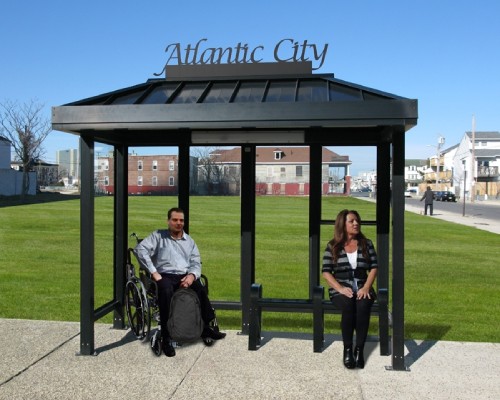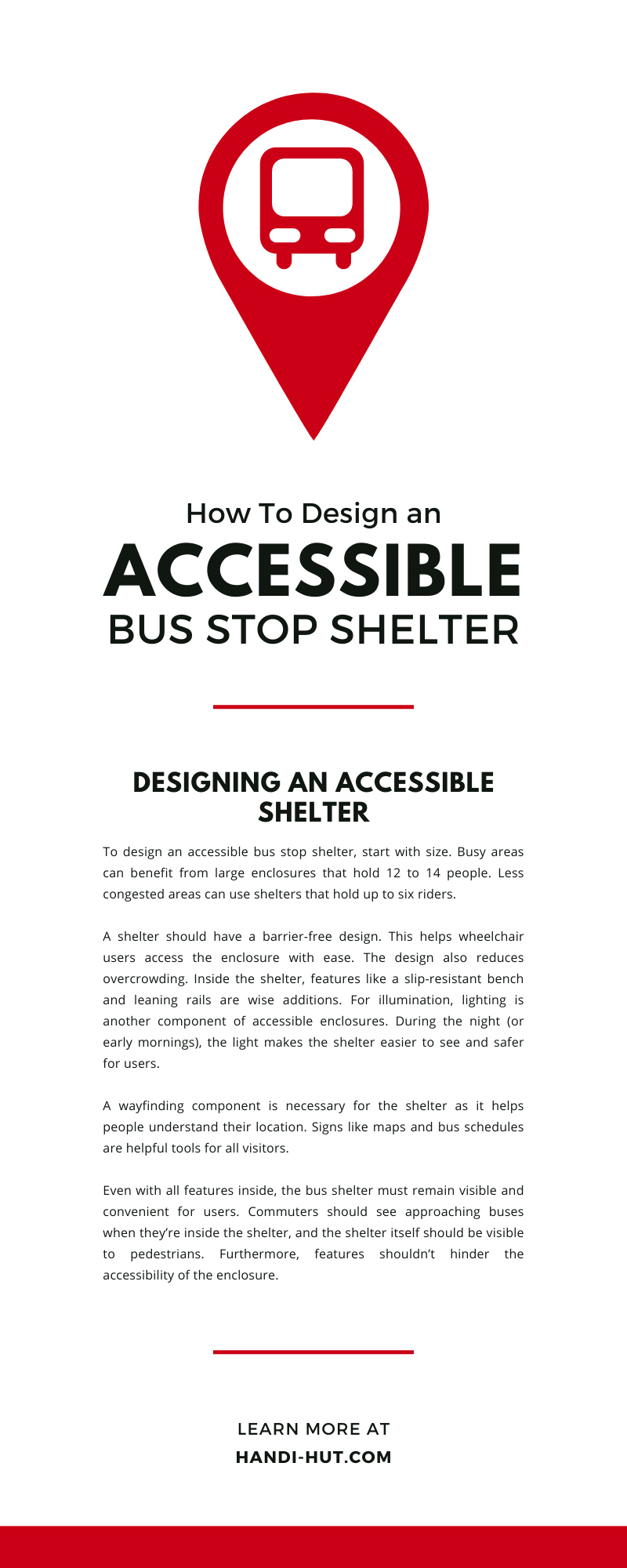
Buses are a crucial part of the public transportation system. To encourage frequent rides, government officials can create suitable waiting spaces. These are bus stop shelters that hold commuters until their ride arrives. However, installing a good shelter requires attention to detail. Learn how to design an accessible bus stop shelter with the help of this guide!
The Importance of Bus Stop Shelters
Bus stop shelters are critical elements of public transportation. They give people a place to sit while they wait for the bus. The enclosure supports public transit and accommodates commuters. After all, not everyone drives or rides trains. It’s common to see shelters in metropolitan cities as bus rides are a popular commute option. However, they’re also in rural areas. The enclosures vary in size, but they all provide suitable space for waiting.
In contrast to bus stop signs (where citizens stand near), the shelters offer beneficial features like benches, lighting, leaning rails, and trash cans. And some shelters even provide USB charging ports. The enclosures enhance the user experience and improve people’s outlook on public transit. As a significant component of public transit, bus stop shelters are here to stay!
What Makes a Good Shelter
A good shelter is visible, accessible, convenient, and safe. Commuters should be able to locate bus stop shelters easily and view approaching rides from inside them. Furthermore, the enclosure should be accessible and convenient. Accessing the structure shouldn’t be a difficult task. Bus stop shelters in odd locations (not near an actual transit stop) or challenging to approach aren’t suitable enclosures. For example, a shelter on a hill isn’t accessible to wheelchair users or the elderly.
When government officials install shelters around the area, it’s vital to consider all possible visitors. Creating a convenient and safe space is necessary for the public. The enclosure must be near public places like residential areas to ensure safety and security.
Setting Guidelines
The Americans with Disabilities Act (ADA) requires the U.S. Department of Transportation to meet guidelines regarding public transit services. And this includes transit shelters. The requirements pertain to accessibility and clearance for bus boarding. Some essential guidelines include shelters having a stable surface and enclosures not intruding over roads or walkways. Although this is a part of the ADA, these guidelines also relate to safety. Commuters risk traffic collisions (getting hit by a vehicle) if the enclosure intrudes on roads.
Overall, setting guidelines is an important part of designing an accessible bus stop shelter. Disabled and non-disabled people deserve proper access to the structure, and the ADA’s standards for transit services are helpful!
Essential Accessibility Elements
Aside from ADA, local laws and regulations dictate accessibility compliance. These regulations improve bus stop shelters for everyone. Here are some essential accessibility elements to understand:
- Shelters need a barrier-free design that allows people to enter the area unimpeded.
- Signage and poles shouldn’t view obstructions. Meaning citizens can view upcoming rides without things blocking their view.
- Available seating must have a slip-resistant surface.
- Bus stop shelters should incorporate a wayfinding element. This can be signs or maps inside the enclosure.
Designing an Accessible Shelter
An initial consideration for bus shelters is placement. After officials find a location for the enclosure, the design process can begin. For location help, placing the enclosure near public buildings is a good idea. Make sure the area is on smooth and even ground (like a sidewalk). Depending on state laws, the shelter must remain a few feet from the road. Comply with regulations and ensure that it meets spacing requirements.
To design an accessible bus stop shelter, start with size. Busy areas can benefit from large enclosures that hold 12 to 14 people. Less congested areas can use shelters that hold up to six riders.
As previously mentioned, a shelter should have a barrier-free design. This helps wheelchair users access the enclosure with ease. The design also reduces overcrowding. Inside the shelter, features like a slip-resistant bench and leaning rails are wise additions. For illumination, lighting is another component of accessible enclosures. During the night (or early mornings), the light makes the shelter easier to see and safer for users.
A wayfinding component is necessary for the shelter as it helps people understand their location. Signs like maps and bus schedules are helpful tools for all visitors.
Even with all features inside, the bus shelter must remain visible and convenient for users. Commuters should see approaching buses when they’re inside the shelter, and the shelter itself should be visible to pedestrians. Furthermore, features shouldn’t hinder the accessibility of the enclosure.
Compliance Tip
To ensure ADA and U.S. Department of Transportation compliance, officials can contact a representative to check the shelter. Representatives can assess the design and added features in the enclosures. If need be, the reps will make recommendations on how to improve the bus shelter. It’s essential to make sure the shelter is accessible to all visitors.
Maintaining the Transit Enclosure
After designing the shelter, it’s critical to maintain the space. Sometimes, government officials neglect bus enclosures, and they become unkempt. To maintain the shelter, a cleaning schedule is beneficial. In addition, it’s best to perform “check-ups” on the enclosures.
For a cleaning schedule, officials can hire external cleaning services to wash the shelters. They can also enlist the local sanitation department to take care of this duty. Cleaning responsibilities can break down into two parts: daily and monthly maintenance. Daily maintenance includes sweeping, changing trash can bags, and removing graffiti (if applicable). Monthly maintenance includes power washing the enclosure and disinfecting benches or leaning rails.
Performing check-ups is an essential component too. This includes checking the overall appearance of the shelter and fixing problems. For example, an official can schedule immediate maintenance if a bench breaks or the lights flicker.
How Citizens Can Help
Anyone can use a transit shelter as it’s open to the public, and various people visit the space daily. Besides the government’s commitment to cleanliness, citizens must help maintain the enclosure too. Simply put, they shouldn’t mistreat the shelter. Defacing the enclosure with graffiti, breaking windows, or damaging benches and poles is unacceptable. Depending on local laws, damage to public property has its own consequences. However, citizens should follow a moral code that doesn’t permit this behavior. Citizens should utilize the shelter without damaging the area.
After reading about accessible bus stop shelters, you should now understand the importance of these enclosures. If you’re interested in purchasing a transit shelter, please contact Handi-Hut. We’re pioneers of prefabricated bus shelters and manufacture all our products with quality materials. Get a shelter that fits your needs, or create a customized unit today!

